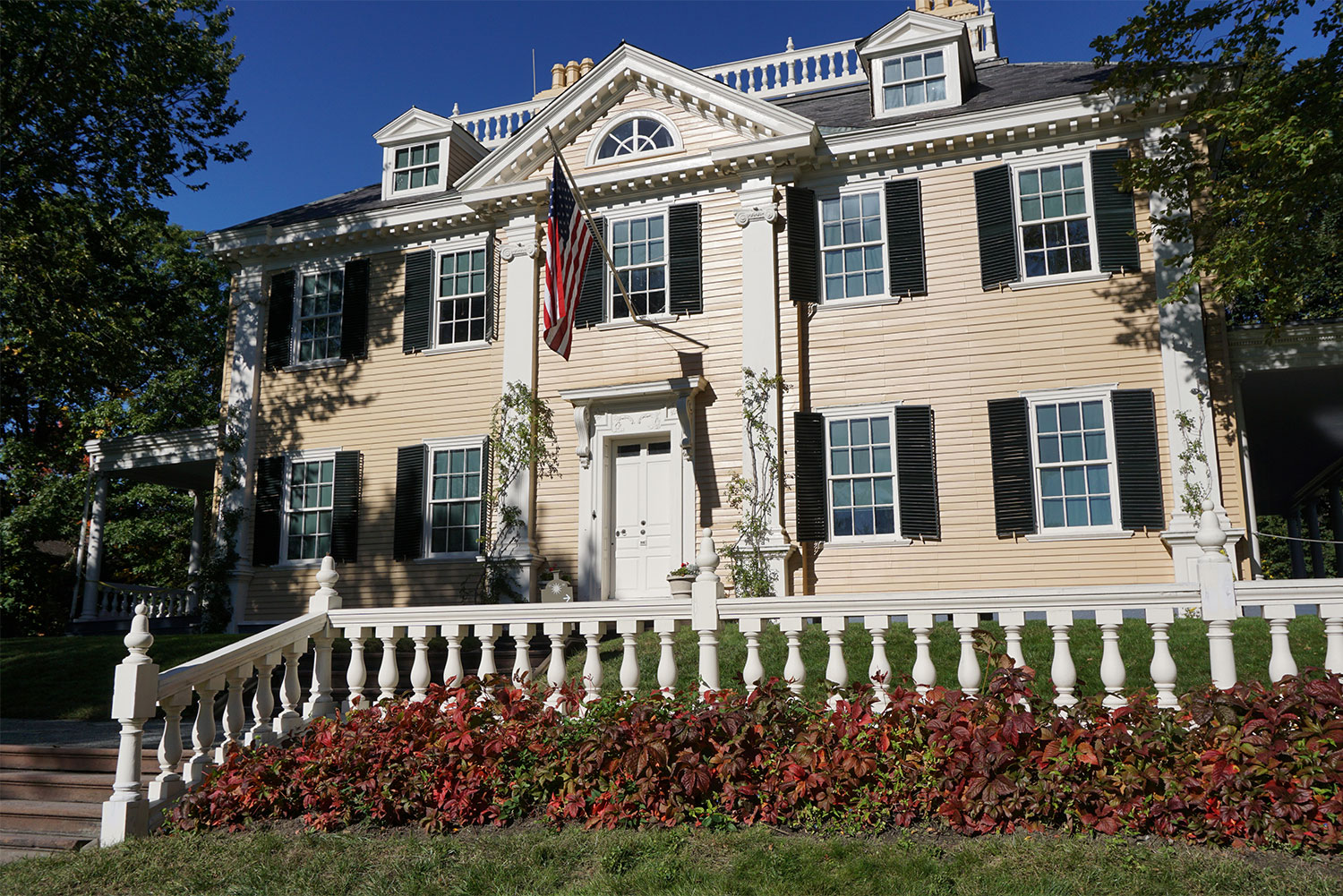To Do Today: Explore the Historic Longfellow House
The National Historic Site served as Washington’s headquarters during the Siege of Boston, before becoming home to the celebrated poet Henry Wadsworth Longfellow

Longfellow House–Washington’s Headquarters National Historic Site, built in 1759. Photo by Flickr contributor Mr. Littlehand
To Do Today: Explore the Historic Longfellow House
The National Historic Site served as Washington’s headquarters during the Siege of Boston, before becoming the home of the celebrated poet Henry Wadsworth Longfellow
What?
Longfellow House–Washington’s Headquarters National Historic Site.
When?
Open Fridays through Mondays, 9:30 am to 5 pm, from late May through October 28. The grounds and gardens are open year-round every day from dawn to dusk. Find more information here.
Where?
105 Brattle St., Cambridge. Take an MBTA Red Line train or the Route 66 bus to Harvard Square and walk up Brattle Street.
How much?
Free.
Why should I go?
Few historic homes can boast the kind of storied provenance that the Longfellow House has. Built in 1759, the Georgian mansion was General George Washington’s headquarters during the 1775-1776 Siege of Boston, when he served as commander in chief of the Continental Army. Later, it was the home of one of the nation’s most famous 19th-century poets, Henry Wadsworth Longfellow, who lived there from his marriage in 1843 until his death in 1882. Longfellow wrote many of his best-known poems, including “The Song of Hiawatha” and “Paul Revere’s Ride,” while living in the house.
Today, the house is maintained by the National Park Service, which offers free ranger-led tours. Visitors can see the room Washington used as his war council room, where the Continental Army was planned, as well as manuscripts, family papers, furnishings, and clothing belonging to the Longfellow family. Tours are the only way to visit the house, and run approximately 30 minutes. Special “deep dive” and family tours are also available at certain times each week, and are about an hour. See the full tour schedule here.
Be sure to leave time to walk among the formal gardens, which were designed by Longfellow. The East Lawn is the setting for the Longfellow Summer Arts Festival each week from June through August, offering readings and music for families and kids. Or just take a walk around and explore the curated gardens at your own pace.
Comments & Discussion
Boston University moderates comments to facilitate an informed, substantive, civil conversation. Abusive, profane, self-promotional, misleading, incoherent or off-topic comments will be rejected. Moderators are staffed during regular business hours (EST) and can only accept comments written in English. Statistics or facts must include a citation or a link to the citation.